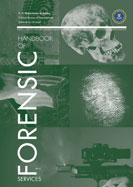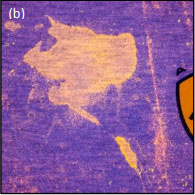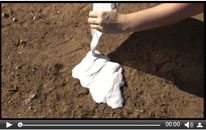|
View in browser: http://www.crime-scene-investigator.net/newsletter/0218.html
|
||
|
FEBRUARY 2018 | ||
| ||
|
This Month's Featured Resource on the Crime Scene Investigator Network Website
|
||
 Handbook of Forensic Services
Federal Bureau of Investigation The Handbook of Forensic Services provides guidance and procedures for safe and efficient methods of collecting, preserving, packaging, and shipping evidence and describes the forensic examinations performed by the FBI's Laboratory Division and Operational Technology Division. The successful investigation and prosecution of crimes require, in most cases, the collection, preservation, and forensic analysis of evidence. Forensic analysis of evidence is often crucial to determinations of guilt or innocence. <View the Publication> |
||
|
Featured Video Presentation
|
||
|
Learn the basic technique for casting footwear impressions. |
||
|
New CSI and Forensic Job Announcements
|
||
|
The most comprehensive listing of Crime Scene Investigation and Forensic To be notified of job openings as they are posted, follow us on Twitter: Job Posting Alerts |
||
|
Crime Scene Technician
Port St. Lucie Police Department, Port St. Lucie, Florida, USA Final Filing Date: March 5, 2018 Responds to crime scenes as required to locate, identify, document, record, recover and process as necessary all items of evidentiary value using the latest accepted scientific and technological methods and equipment documenting such activity in written reports. <View complete job listing> |
||
|
Crime Scene Specialist
Marion County Forensic Services Agency, Indianapolis, Indiana, USA Final Filing Date: Open until filled Responsible for forensic support in the identification, preservation and collection of forensic evidence at crime scenes, providing a wide variety of crime scene activities involving crimes against persons (homicides, suicides, rapes, aggravated assaults, etc.) to include, but not limited to, finger print processing, DNA collection/swabbing, and firearm evidence. <View complete job listing> |
||
|
Crime Scene Investigator
Hillsborough County Sheriff’s Office, Tampa, Florida, USA Final Filing Date: January 22, 2018 Conduct crime scene investigations to locate, identify, preserve, photograph, and prepare collected evidence to establish and maintain chain of custody and for submission to crime laboratories for analysis. Photograph and videotape major crime scenes using 35mm cameras, video cameras, and digital imagery. <View complete job listing> |
||
 |
||
|
Forensic Scientist, Toxicology
Colorado State Department of Public Safety, Pueblo, Colorado, USA Final Filing Date: March 20, 2018 This position is responsible for the preservation, analysis and interpretation of the physical evidence collected in criminal cases for federal, state and local law enforcement agencies. <View complete job listing> |
||
|
Forensic Evidence Technician
San Diego Sheriff's Department, San Diego, California, USA Final Filing Date: March 6, 2018 The current opening is in the Crime Laboratory's Latent Print Unit, where the position will be responsible for processing evidence items for fingerprints and inputting crime scene fingerprints into an Automated Fingerprint Identification System (AFIS). <View complete job listing> |
||
|
Property Clerk
Saint Paul Police Department, Saint Paul, Minnesota, USA Final Filing Date: March 5, 2018 Receives and electronically logs property and evidence impounded by police personnel due to parking violations, arrests, criminal activity, improper registration, health hazards, accidents, and recovered, stolen, lost, and abandoned property. Prepares documents accurately describing the evidence or property. <View complete job listing> |
||
|
Search for more job listings in Crime Scene Investigations and Forensics To be notified of job openings as they are posted, follow us on Twitter: Job Posting Alerts |
||
|
Other Resources on the Crime Scene Investigator Network Website
|
||
|
Not Subscribed to this Newsletter?
|
||
|
If you are not subscribed to this newsletter, you may subscribe with this link: SUBSCRIBE via email |
||
|
To Unsubscribe
|
||
|
To unsubscribe from future e-mail newsletters, please click here: UNSUBSCRIBE Copyright ©2018 Crime Scene Resources, Inc. Crime Scene Investigator Network |




